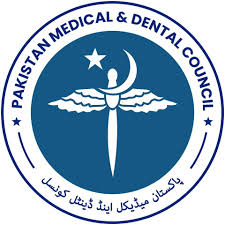Frequency of the multi and extensively drug-resistant Salmonella Typhi in a health care facility
DOI:
https://doi.org/10.37018/YVQH7295Keywords:
Multidrug resistant (MDR), Extensively drug resistance, Enteric fever, Salmonella typhi.Abstract
Background: Antibiotic resistance is increasing against Salmonella Typhi (S. Typhi), causative agent of enteric fever, at a very high pace in Pakistan. The objective of this study was to evaluate the emergence of multi and extensively drug resistant Salmonella Typhi among suspected patients in a public health care facility in Lahore.
Patients and methods: 5cc blood samples from the patients with high grade fever (>38°C), vomiting and bradycardia (heart rate 84 bpm) were collected from laboratory of Arif Memorial Teaching Hospital, Lahore over six months (August 2020-January 2021), After informed consent, questionnaire were filled and total 97 samples were taken from suspected patients and screened for Salmonella Typhi by using Typhidot IgG/IgM by ELISA kit (one step typhoid fever) for S. Typhi. Gram staining, culture and biochemical testing was performed for confirmation. Antibiotic susceptibility testing was used to evaluate the emergence of antibiotic resistance. Statistical analysis was performed by using SPSS 20.0, software. Chi square test was used,
Results: Total 55 (56.7%) samples out of 97 (100%) were reported positive for Salmonella Typhi. Antimicrobial susceptibility testing results indicated that 6 samples were resistant to more than one antibiotic commonly called as multidrug resistant, 44 samples were extensively drug resistant and 5 samples were nonresistant/sensitive to selected antibiotics. Highest resistance was reported against Ampicillin (51 samples (92.7%) and Co-trimoxazole (50 samples (90%)). Resistance against Moxifloxacin and Tobramycin, Ciprofloxacin, Ceftriaxone Cefuroxime and Cefotoxime, Cefxime, Levofloxacin, Salbactum, Imepenum and Amikain was 47 (85.4%), 46 (83.6%), 45 (81.81%), 44 (80%), 37 (67.2%), 32 (58.18%), 14 (45%) and 9 (16.3%) respectively. Lowest resistance was reported against Meropenum 5 (9%) and Azithromycin 1 (1%).
Conclusion: It is concluded that the monitoring of MDR and XDR must be performed by all clinical microbiology/pathology laboratories to implement effective measures to reduce the emergence of antimicrobial resistance.
Downloads
Published
How to Cite
Issue
Section
License
The Journal of Fatima Jinnah Medical University follows the Attribution Creative Commons-Non commercial (CC BY-NC) license which allows the users to copy and redistribute the material in any medium or format, remix, transform and build upon the material. The users must give credit to the source and indicate, provide a link to the license, and indicate if changes were made. However, the CC By-NC license restricts the use of material for commercial purposes. For further details about the license please check the Creative Commons website. The editorial board of JFJMU strives hard for the authenticity and accuracy of the material published in the journal. However, findings and statements are views of the authors and do not necessarily represent views of the Editorial Board.

















